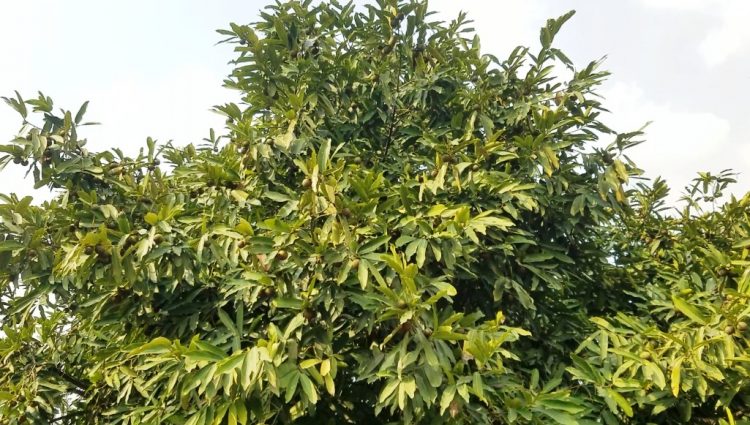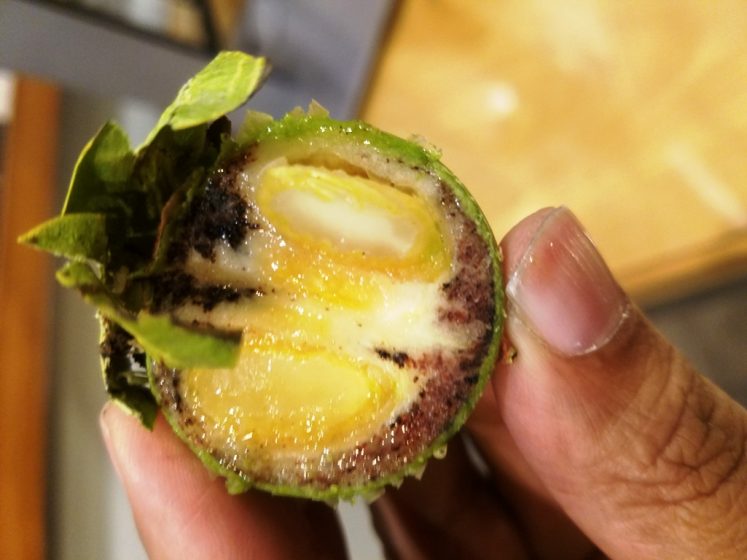The Black Sapote “Diospyros nigra” is a species of persimmon in the family Ebenaceae. It is also called “chocolate pudding fruit” and black snap apple. Black Sapote is a tropical fruit mostly grown in Mexico, Central America, The Caribbean, and Colombia. Sapote means soft edible fruit and has no relation with white sapote or mamey sapote. The tree can grow to 25 meters in height. It is an evergreen tree but frost-sensitive and can tolerate light frosts. Black Sapote unripe fruits are astringent, caustic, bitter, irritating, and have been used as fish poison in the Philippines.
The tree leaves are elliptic-oblong, tapered, dark green, glossy, and 10 to 30 long. The Black Sapote tree is normally found below 600 meters. The tree propagation is usually from a seed that required 30 days to germinate. It can retain viability for several months. Some trees are seedless, however, and can be propagated by air-layering or shield budding. The tree that takes three to four years to grow should be spaced 10 to 12 meters apart. Normally, trees bear male and female flowers. But in some cases, a tree can bear male flowers. The fruit takes 4 to 5 years from seed. The tree flowers appear in the leaf axils, solitary or in small clusters tubular and small.
The fruit is tomato likes with inedible skin that turns from olive to a deep yellow-green when ripe black markings near the heart of old trunks. The pulp is white and inedible but assumes a flavor, color and texture often likened to chocolate pudding when ripe. Most fruits normally contain a maximum of 12 seeds. Its texture like papaya has the taste and consistency of chocolate pudding. The tree is sensitive to drought and needs irrigation in dry areas. If you want to grow Black Sapote in a pot then it is possible. Normally, commercial growers plant seedlings in the pot until they become one to two feet tall before planting them in the ground.
The tree range in size and hairlines of leaves, shapes, seediness, flesh color and sweetness of fruit, and time of fruiting suggest that considerable genetic variability exists. A healthy tree normally produced 450 kg per tree. The Black Sapote has various names like Diospyros Digyna, Diospyros Nigra, Black Persimmon, Chocolate-Fruit, Chocolate Pudding Fruit, Zapote Negro, Schwarze Sapote, Zapote Prieto, and Chocolate Persimmon.
The sapote fruit can be eaten fresh, or with milk. However, this fruit is also served as a dessert, accompanied by ice cream, milk, whipped cream, lemon juice, and orange juice. The black sapote tree doesn’t require much fertilizer; hence the organic fertilizer is sufficient. The sapote is pest-free, but in rare cases, it can be infected by scales; by cochineals in winter, or spider mites in the summer.
Health Benefits of Black Sapote
Black sapote gears up on vitamin C, about 100gm offering of the fruit will take care of 25% of daily intake, and contains about 20 mg of it. It has also a good amount of vitamin A directly from the diet is a healthy practice. Black sapote can be considered quite a good source of potassium about 350 mg. The three benefits of building muscle control the heart’s electrical activity and maintain the fluid-electrolyte balance.
The tree contains a fair amount of calcium at about 22 mg per 100gm. Black sapote provides iron in trace amounts after all packed with such a variety of vitamins and minerals. The pulpy nature of this fruit is healthy for the digestive processes. When eaten raw, it is a source of dietary fiber. Black sapote also gives you an instant dose of energy.
Read About – Ficus – The Most Popular House Plant









